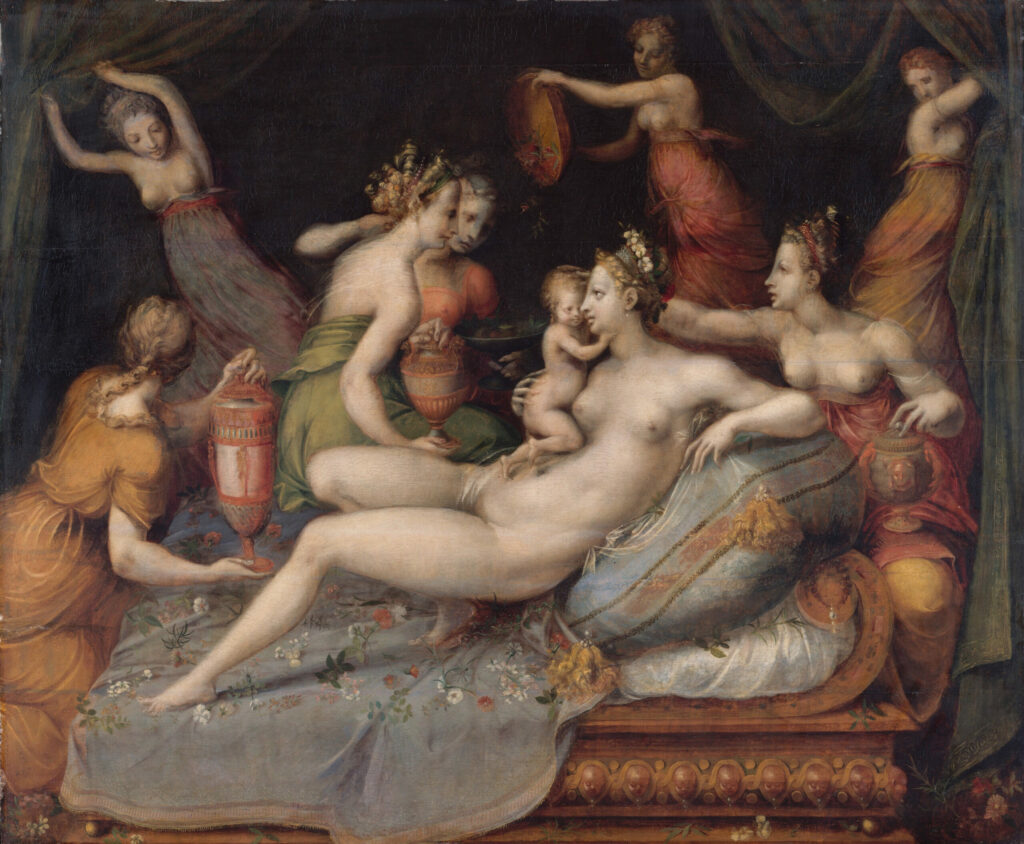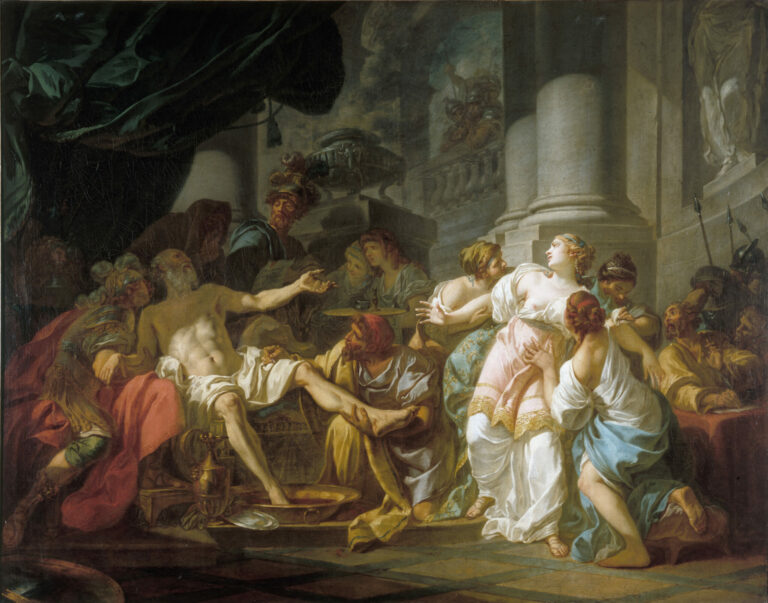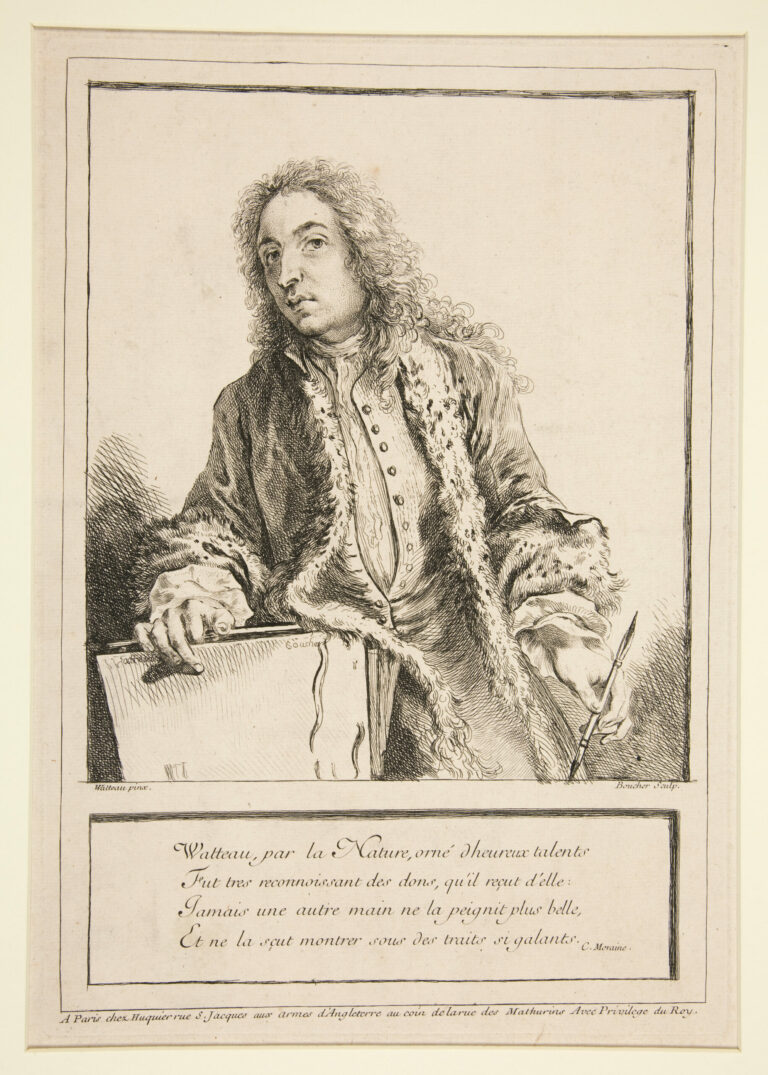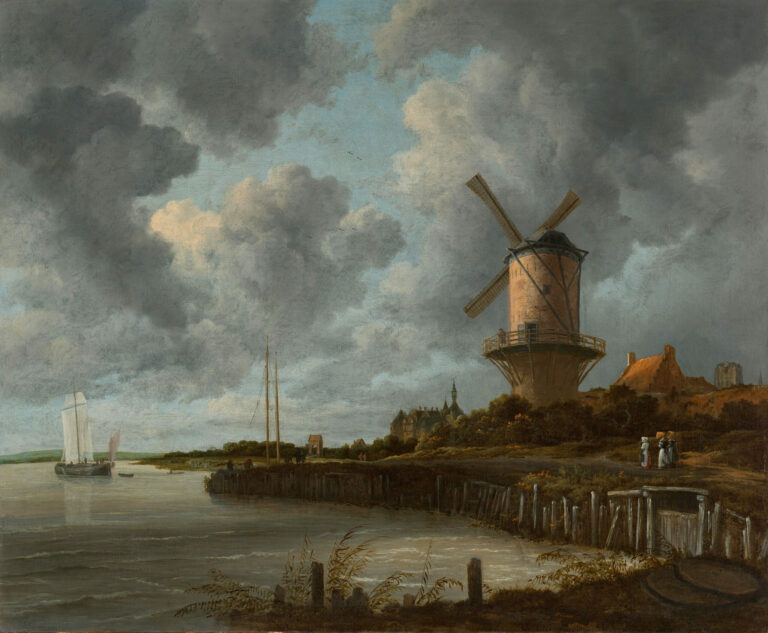
In this masterful composition, the Master of Flora presents an exquisite interpretation of the Birth of Love (Cupid).
At the center of the canvas, Venus, goddess of love, reclines on a sumptuous bed draped in silver-reflective fabrics and adorned with delicate flowers.
Her body, painted with distinctive Mannerist grace, embodies the Renaissance ideal of beauty. Surrounding her is a retinue of nymphs clothed in warm-hued draperies—ochre, coral red, and olive green—carrying precious vases as they participate in this mythological scene with choreographed elegance.
Cupid, nestled against his mother, emerges as a central figure in the composition, while the graceful movements of the nymphs guide the viewer’s eye across the canvas. The influence of the School of Fontainebleau is evident in the treatment of elongated bodies, sophisticated poses, and the decorative richness of the entire arrangement.
Further Context
- The Birth of Cupid by the Master of Flora, second half of the 16th century
- Overall 42 1/2 x 51 3/8 in. (108 x 130.5 cm), including added strip of 3 1/2 in. (8.9 cm) at top
- The Metropolitan Museum of Art, Fifth Avenue, New York, displayed in Gallery 544
- https://www.metmuseum.org/art/collection/search/437006
The Master of Flora, an anonymous artist active in France during the second half of the 16th century, derives his conventional name from a series of paintings depicting mythological scenes, of which this “Birth of Love” represents one of his most accomplished examples.
His sophisticated style demonstrates a perfect assimilation of Italian influences imported to the French court, particularly by artists of the School of Fontainebleau.
The fusion he creates between French elegance and Italian Mannerism establishes him as one of the most refined representatives of this pivotal period in French art, where a taste for mythological allegory merges with unabashed sensuality.






